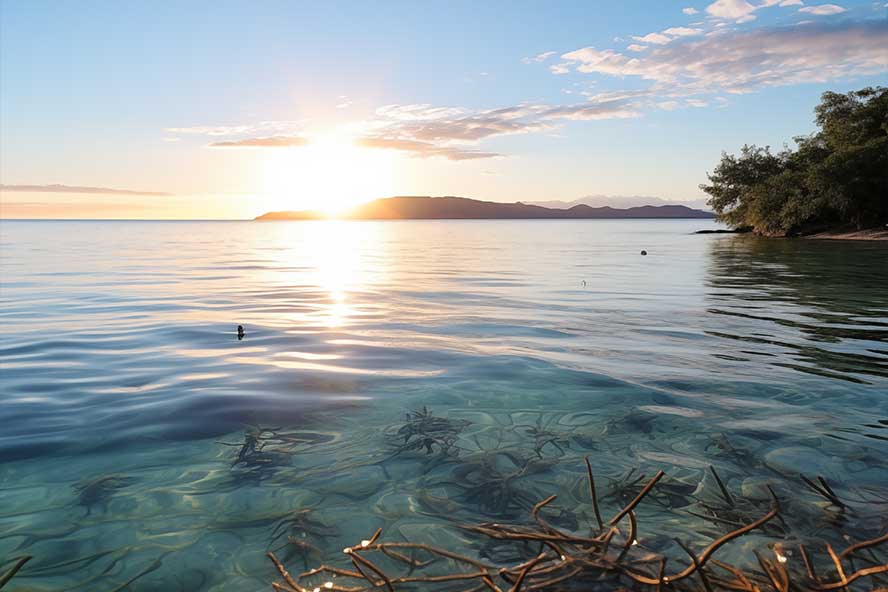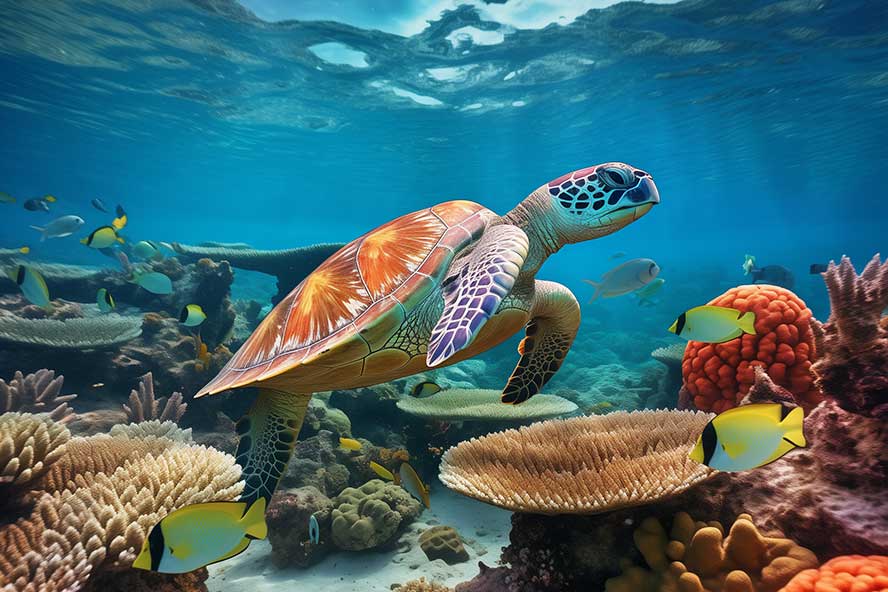Discovering the Protected Marine Species of the Whitsundays
The Whitsundays, a stunning island chain located in the heart of the Great Barrier Reef, is a premier destination for adventurers and nature lovers and a sanctuary for a diverse range of protected marine species of the Whitsundays. This region is a testament to Australia’s commitment to marine conservation, from the majestic humpback whales to the elusive dugongs.

The Whitsunday Region: A Conservation Overview
The Whitsunday Region plays a crucial role in protecting and preserving marine life along the Australian coastline and Great Barrier Reef. Established to safeguard the interests of this biodiverse area, the local government and national conservation efforts ensure the survival of species that call these waters home.
Protected Species and Their Habitats
Marine life in the Whitsundays thrives, thanks to stringent protections under various legislations, including the Commonwealth Environment Protection and Biodiversity Conservation Act and the Great Barrier Reef Marine Park Act. These laws help protect species like the Whitsundays and Great Barrier Reef turtles, and the dugongs, ensuring their habitats are preserved and remain untouched by harmful human activities.
Encounters with Marine Giants
The Whitsundays offer unparalleled opportunities to witness humpback whale sightings and interact with a plethora of aquatic life, from friendly fish to the vibrant corals that form the backbone of the reef’s ecosystem. These encounters are carefully managed to ensure minimal impact on these protected species’ natural behaviours and habitats.
Protected Marine Species Of The Whitsundays (Listed)
- Some shells – helmet shells, triton shells, tridacnid clams
- Some fish – seahorses, pipefish, sea dragons, potato cod, Queensland grouper, barramundi cod, Maori wrasse, and all groupers (Epinephelus) more than 100 cm
- Some sharks – whale shark, grey nurse shark, great white shark, freshwater and green sawfish
- Sea snakes
- Crocodiles
- Marine turtles
- Birds
- Seals
- Whales and dolphins
- Dugong

Marine Conservation Efforts
Strategies for Protection
Collaborative efforts between local, state, traditional owners and national entities focus on conserving and managing the Whitsundays’ marine life. Initiatives include designated no-take zones, where fishing and other extractive activities are prohibited, to protect vulnerable species and their feeding grounds. Local conservation teams also include
Whitsunday Conservation Council
The Role of Research and Education
Organizations like OUCH Volunteers and the Australian Marine Conservation Society play a pivotal role in researching the marine species of the Whitsundays, educating the public about the importance of marine conservation, and advocating for policies that support the health of the marine ecosystem.
It is important to note we have the facts about the Great Barrier Reef before making informed decisions; if you are interested in becoming a helper of the reef, check out the groups above.
Protected Marine Species of the Whitsundays
FAQ
What makes a species "protected"?
Protected species are those classified as at risk due to declining populations or threats from human activities. These species are safeguarded by laws at various levels, from local to international, to ensure their survival and conservation.
How can tourists contribute to the conservation of marine life in the Whitsundays?
Visitors are encouraged to engage in responsible tourism practices, such as adhering to guidelines when snorkeling or diving, participating in eco-friendly tours, and avoiding interference with wildlife to minimize their impact on the natural environment.
What are some popular visitor activities that support marine conservation?
Exploring the underwater world of the Whitsundays, including snorkelling and diving in protected areas, offers a chance to witness the region’s rich biodiversity while supporting conservation efforts. Most tours and volunteer opportunities also provide insights into the significance of protecting marine life.
What is being done to help sea grass in the Whitsundays?
Nicole Rosser, the owner of ZigZag Whitsundays Whitehaven Beach tour, is running a seagrass nursery, which entails removing epiphyte growth from the seagrass, keeping the pumps running, and dealing with any problems. She also has seagrass seed storage set up in the office, which is like having our little water feature. to find out more about what Nicole is up to around the Whitsundays and Great Barrier Reef see her story here
Check Out All The Tours
Looking to visit Whitehaven Beach or the Great Barrier Reef, see all the tours.
More Great Barrier Reef Information
Get in Touch
Have Questions?
Ask Nath J